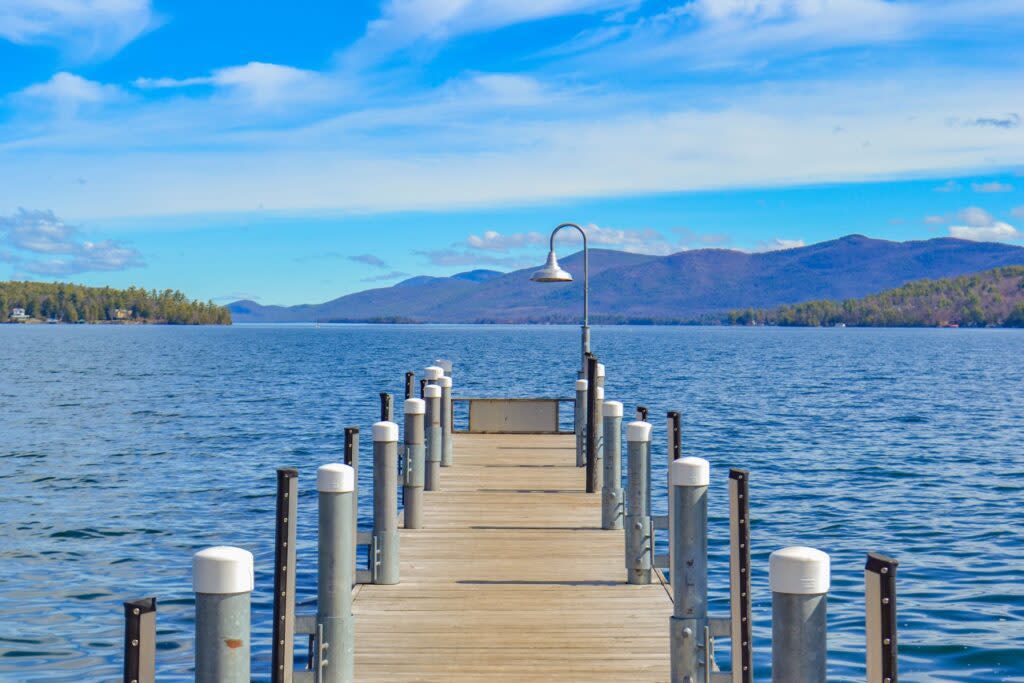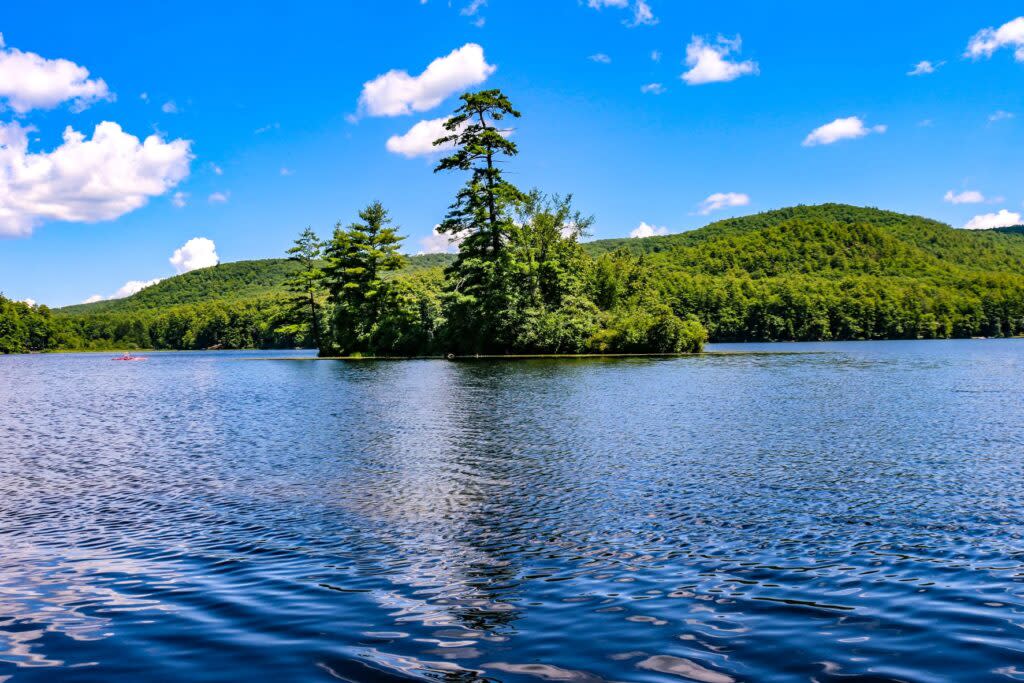Earth Day is a worldwide event that celebrates, promotes, and supports environmental protection efforts. The Lake George Area lies in the southern region of the Adirondack Park with some of the most beautiful outdoor recreation in the world. Here, environmental protection is simply a way of life. This Earth Day, we wanted to take a moment to recognize and thank the many local organizations that work to ensure the Lake George Area’s environment is kept clean while still being accessible to the many tourists and recreation enthusiasts who enjoy its wonders.
The Importance of Earth Day
“It is without comparison, the most beautiful water I ever saw; formed by the contour of mountains into a basin…finely interspersed with islands, its water limpid as crystal, and the mountain sides covered with rich groves.” - Thomas Jefferson
Over 200 years later, that same water and mountainsides that made such an impression on Jefferson still exists. Though the shores are more populated, the pristine condition of the lake still inspires awe in those who see it. In fact, water from Lake George is so clean that it is used as a source of drinking water for the communities surrounding it.
We’d like to tell you that the Lake George Area has never faced environmental threats, but unfortunately, that is not the case. Instead, we’ll share some of the initiatives in place and work being done by local organizations who strive to protect Lake George and its neighbors. We’ll also share some ways you can help, ensuring that you’ll get to vacation here for many more years to come.
Protecting the Water
In recent years, Lake George and other bodies of water in our area have faced very real threats – aquatic invasive species.
Asian Clams in Lake George

Photo Credit: Kacey O'Brien
Asian clams are only one of five invasive species currently present in Lake George. They are very small, usually less than 1.5 inches, and were first spotted in 2012. The clams can spread very quickly, much more quickly than fish and other predators can eat them. They have clogged water intake pipes, devoured resources relied upon by existing species including Native Mussels, and have contributed to increased algae growth in the lake.
How did Asian Clams end up in Lake George? We suspect that Asian Clams arrived as stowaways in bait buckets and boats that were used in other waters they live in. Though, as their name suggests, the species comes from Asia. They have thrived in the U.S. since the 1930s and have been identified as invasive species in over 40 states.
Eurasian Milfoil in Lake Luzerne

Photo Credit: Kacey O'Brien
Eurasian Watermilfoil is a noxious plant that was first discovered in Lake Luzerne in 1989. Among others nearby lakes, Eurasian Watermilfoil has also invaded Lake George and Loon Lake. As it grows, this invasive species forms into thick, floating mats on the surface of the water. Eurasian Watermilfoil spreads to block off sunlight, killing off native aquatic plants and furthering harming the ecosystem by leaving fish and other native species with a dwindling food source. Milfoil also negatively impacts boating, fishing, swimming, and other water recreation.
How You Can Help – Stop Aquatic Hitchhikers
Since they were first discovered, several local organizations have been pooling resources and working together on projects to eradicate Asian Clams. However, the best way to stop aquatic hitchhikers is prevention through the “Clean, Drain, and Dry” process.
With unanimous support from surrounding communities, the Lake George Park Commission manages a regulatory inspection/decontamination of trailered boats. Before launching your boat in Lake George, head to one of six conveniently located regional inspection/decontamination stations to get a seal of approval. If you arrive with a “cleaned, drained, and dried” boat you will not have to go through the decontamination process, which consists of a 140-degree, chemical-free water rinse of your boat and trailer. Once your inspection and/or decontamination is done (free of charge) go ahead and dock at your preferred marina. When boating season comes to a close and you go to retrieve your vessel, the marina or launch operator will add another seal to your boat. If the seal is still intact come next spring/summer (meaning you haven’t launched in another body of water since) there is no need to go through the inspection/decontamination process again.
Although only trailered vessels are required to go through this mandatory inspection/decontamination process, we recommend regularly rinsing your kayaks and canoes, and cleaning out your bait buckets before and after use as well. Some launches like Lake Luzerne’s Wayside Beach also have an onsite rinse station to prevent the introduction of other aquatic hitchhikers and help combat the Eurasian Watermilfoil invasion.
From May 1st to October 31st all trailered boats being launched in Lake George must be inspected at one of the following inspection station locations:
- Million Dollar Beach – 139 Beach Road, Lake George
- Dunham’s Bay Marina – 2036 Bay Road, Lake George
- Huletts Landing Marina – 6065 Lakeside Way, Huletts Landing
- Roger’s Rock Public Campground – 9894 Lakeshore Drive, Hague
- Norowal Marina – 21 Sagamore Road, Bolton Landing
- Adirondack Welcome Center – I-87 Adirondack Northway (between Exits 17 & 18), Queensbury
Additional Resources and Information: Lake George Park Commission
Protecting the Land
The land of the Lake George Area needs just as much protection as its water. And much like the water, it is susceptible to the introduction of invasive species along with overuse/misuse.
Ecological Restoration & Conservation

The Lake George Land Conservancy (LGLC) establishes and maintains parks and preserves throughout the Lake George Wilderness. Currently they manage more than 13,000 acres of land.
The LGLC carefully designs these parks and preserves so they can be kept open for year-round recreation, while also nurturing the land back to a more natural state. Initial and ongoing maintenance consists of removing debris and litter, rebuilding to minimize erosion, hydroseeding, and planting native trees.
As mentioned before, our land also faces threats from aggressive invasive species. The Hemlock Woolly Adelgid, native to China and Japan, was accidentally introduced to the United States in the 1950s. It is a parasitic-like insect that feeds on sap from Hemlock and Spruce trees, disrupting the flow of nutrients to the canopy, and leading to tree health decline and tree mortality within a decade of infection.
Our Hemlocks and Spruces provide ecosystems for all sorts of native species, including fungi, and also help in soil erosion control along our shores. To fight the spread of Hemlock Wooly Adelgid, the LGLC monitors its parks and preserves to identify new infestations and removes infected trees as soon as possible.
How You Can Help – Leave No Trace
The Seven Principles of Leave No Trace were first created during the 1960s and 70s when advances in technology and outdoor gear resulted in an influx of people visiting national and state parks. This code of ethics is an effort to counter the concern of human overuse/misuse of our land. Here in the Lake George Area, Leave No Trace is second nature. By following the Seven Principles you are helping to protect our bodies of water, forests, and mountains for future generations to enjoy.
The Seven Principles of Leave No Trace:
- Plan Ahead & Prepare
- Travel & Camp on Durable Surfaces
- Dispose of Waste Properly
- Leave What You Find
- Minimize Campfire Impacts
- Respect Wildlife
- Be Considerate of Others
Additional Resources and Information: Leave No Trace, Adirondack Council, Adirondack Mountain Club
Earth Day Events
As with any good cause, donating, volunteering, and educating yourself can go a long way. On and around Earth Day you can find events large and small in the Lake George Area with enriching environmental protection activities.
Earth Day Celebration – Glens Falls City Park

Photo Credit: Kacey O'Brien
Date: April 20, 2024
Time: 11 a.m. to 2 p.m.
Location: Maple Street, Glens Falls
A family-friendly event, gather in the heart of downtown Glens Falls for a multitude of interactive sustainability-related activities and informative commentary from notable climate speakers.